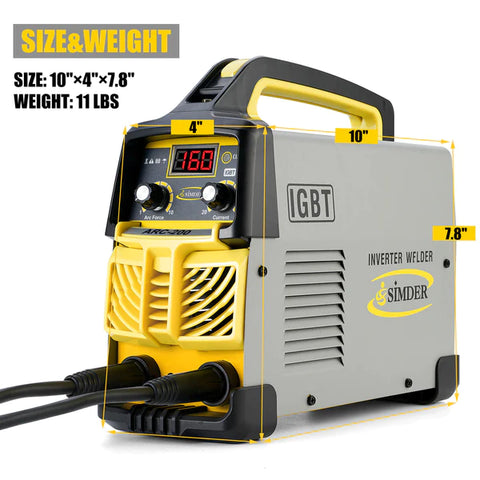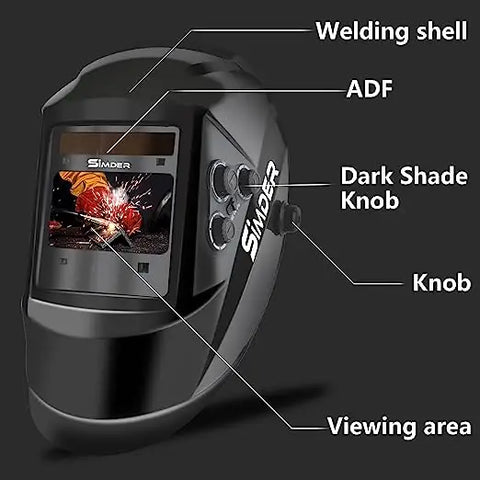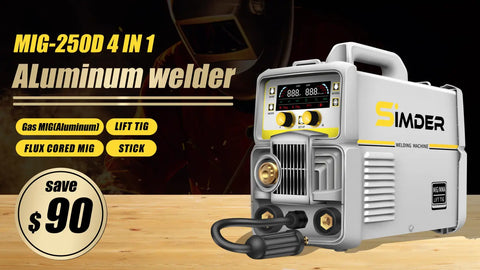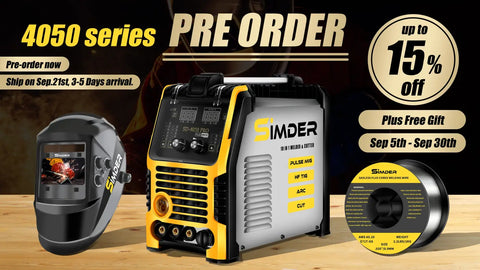What is Welding Joints
Sep 13, 2023
What is a Welding Joint?
A welding joint is the point where two or more metal pieces are joined together using heat or pressure. It is crucial to understand the different types of welding joints to ensure a strong and durable bond. Let's take a closer look at some common types of welding joints:
Butt Joint

The butt joint is the most basic type of welding joint. It involves joining two metal pieces by placing them side by side and welding along the edges. This joint is commonly used in structural applications and provides excellent strength when properly executed.
Lap Joint

The lap joint is formed by overlapping two metal pieces and welding them together. It is often used when the strength of the joint is not a primary concern. This type of joint is commonly found in sheet metal fabrication and is relatively easy to create.
Tee Joint

The Tee-joint is formed when one metal piece is welded perpendicularly to another, creating a "T" shape. This joint is widely used in various industries, including automotive and construction. It provides good strength and is relatively easy to weld.
Corner Joint

The corner joint is formed when two metal pieces are joined at a 90-degree angle. It is commonly used in box-like structures and requires careful welding to ensure proper fusion at the corners. This joint offers excellent strength and stability when executed correctly.
Edge Joint

The edge joint is created by welding two metal pieces along their edges. It is often used in sheet metal fabrication and provides a clean and aesthetically pleasing finish. This joint requires precise welding techniques to achieve a strong bond.
Comprehensive Understanding of Welding Joints
Now that we have explored some common types of welding joints, let's dive deeper into the comprehensive understanding of this essential process. Welding joints play a crucial role in determining the strength, durability, and overall quality of a welded structure. Factors such as joint design, welding technique, and material selection significantly impact the integrity of the joint.
It is essential to consider the specific requirements of each welding project to determine the most suitable joint type. Factors such as the type of metal, joint strength requirements, and the intended application should be taken into account. Additionally, proper preparation, including cleaning and aligning the metal pieces, is vital to ensure a successful weld.
Welding joints can be further enhanced by using various welding techniques, such as MIG (Metal Inert Gas) welding, TIG (Tungsten Inert Gas) welding, or arc welding. Each technique has its advantages and is suitable for different applications.
In conclusion, welding joints are the backbone of any welded structure. Understanding the different types of welding joints and their applications is crucial for achieving strong and durable welds. By following proper welding techniques and considering the specific requirements of each project, welders can create reliable and long-lasting joints.
Usually metals or thermoplastics, by causing fusion. It involves melting the base materials and adding a filler material to create a strong bond. Welding is widely used in various industries, including construction, automotive, and manufacturing.
Principles of Joint Design
The principles of joint design in welding are the cornerstone of ensuring the quality of a welded connection. In welding engineering, selecting the right type of joint to meet the specific requirements of an application is paramount. This includes considering factors such as joint strength, durability, load requirements, and the materials being used. The design of a welding joint should have proper geometric shapes to ensure uniformity and stability in the weld. Additionally, considering the distribution of stresses at the joint is also a critical factor, as it directly impacts the strength and reliability of the weld. Therefore, in the design of welding joints, engineers and welders need to carefully balance various factors to ensure that the final welded connection meets the project's requirements and exhibits excellent performance and durability.
Top seller of Stick welder
SSimder ARC-200 welding machine is an advanced welding tool featuring IGBT technology, delivering exceptional welding performance. Designed to be lightweight and portable, this equipment is suitable for a wide range of welding projects. The ARC-200 welding machine comes equipped with dual voltage options, allowing you to adjust it according to your specific needs for optimal welding results. Specifically designed for stick welding, it ensures ease of use and high-quality welds, making it ideal for both home repairs and professional applications.
Welding Safety Measures
To mitigate the hazards associated with welding, it's essential to implement proper welding safety measures. Here are some key precautions:
Personal Protective Equipment (PPE): Welders should wear appropriate PPE, including welding helmets, earplugs, safety goggles, welding gloves, and protective clothing. These gear items safeguard the eyes, face, ears, and body from harm.
Proper Ventilation: Ensure that the welding area has adequate ventilation to prevent the accumulation of harmful fumes and gases.
Fire Protection: Provide appropriate fire extinguishing equipment within the welding area to prevent fires.
Regular Maintenance: Regularly inspect and maintain welding equipment to ensure proper functioning and reduce the risk of accidents.
High-quality welder will make you feel doubly at ease in welding. The SSimder MIG-250D can perfectly cater to all your needs. During our ongoing promotion, enjoy an instant $90 discount. Check Now!
Buy SD-4050 series enjoy up to 15% off and get a free gift now!







